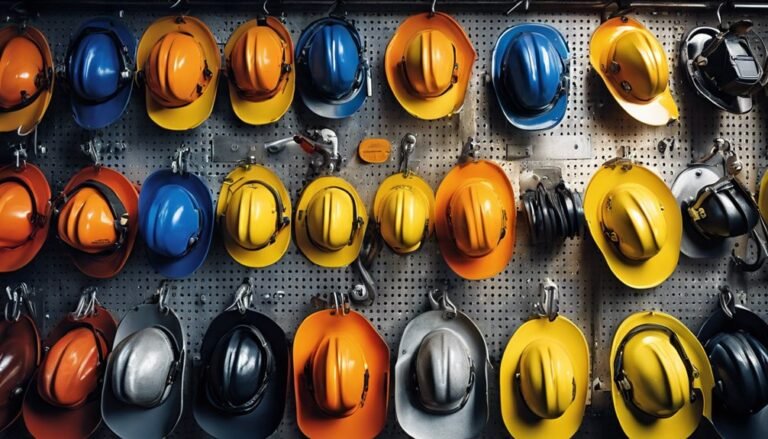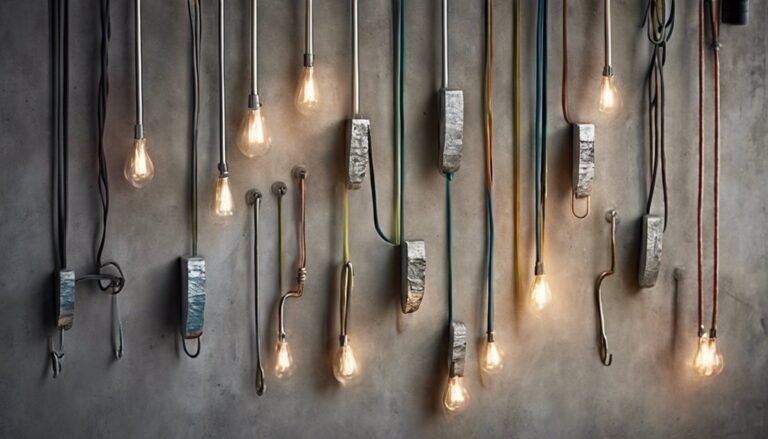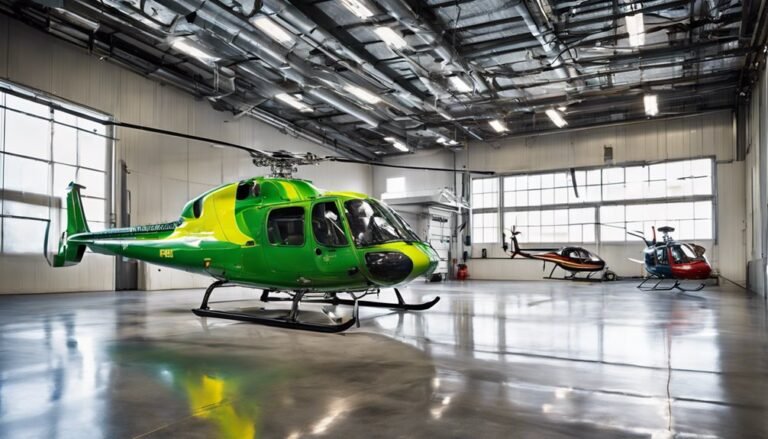Hooks for Securing Aerial Silk Performers’ Gear
Secure hooks are essential for safely fastening aerial silk performers' gear. You need to choose hooks based on load ratings and materials, like aluminum for lightweight routines or stainless steel for added strength. Make sure ergonomic designs, secure locking systems, and regular inspections are part of your routine. Proper installation and alignment are key to safety while maintaining awareness of environmental conditions. Understanding the different types of hooks available can greatly enhance your performance setup.
Understanding the Importance of Secure Hooks
When it comes to aerial silks, the safety of your equipment hinges considerably on the hooks you use. These components are critical to ensuring hook safety and maintaining aerial stability during your performances. If your hooks aren't secure, you risk not just your own safety but the integrity of your entire rig. It is crucial to select hooks that are rated for the loads you'll experience in the air. Additionally, regularly inspect your hooks for wear and tear, as even minor damage can lead to catastrophic failure. Remember, the freedom you seek in the air is only as strong as the weakest link in your setup. Prioritize secure hooks, and you'll enhance your performance while ensuring a safer aerial experience.
Types of Hooks for Aerial Silks
When selecting hooks for aerial silks, it's crucial to evaluate the materials used and their durability. Different materials can affect the hook's load capacity, which is critical for safety during performances. Understanding these factors will help you choose the right hooks for your specific needs.
Hook Materials and Durability
Choosing the right hook material for aerial silks is essential, as it directly impacts safety and performance. You'll want to prioritize hook strength while also considering material flexibility. Common materials include aluminum and stainless steel; both provide a great balance between durability and weight. Aluminum hooks are lightweight and exhibit good flexibility, allowing for dynamic movements without compromising safety. On the other hand, stainless steel hooks offer higher strength, making them ideal for more intense routines. Remember, the right combination of material strength and flexibility is crucial for achieving that sense of freedom while performing. Always inspect your hooks regularly for wear and tear, ensuring they remain reliable as you soar through the air.
Load Capacity Considerations
While selecting the right type of hook for aerial silks, understanding load capacity is essential for guaranteeing both safety and performance. You'll want to contemplate hooks that undergo rigorous load testing, verifying their strength under various conditions. The weight distribution of your aerial silks setup directly impacts the hook's effectiveness; uneven loads can lead to failure. Look for hooks with a high load capacity, typically rated for several times your maximum weight. Additionally, reflect on the connection method—carabiners and quick links can provide added security. Always double-check the manufacturer's specifications and verify your gear is compatible with the intended use. Prioritizing load capacity not only safeguards your performance but also enhances your freedom to explore the art of aerial silks.
Key Features to Look for in Aerial Hooks
Understanding the key features of aerial hooks is essential for guaranteeing safety and performance in aerial silk practices. When selecting aerial hooks, consider the following aspects to enhance your experience:
- Hook Design: Look for ergonomic shapes that fit comfortably in your hand and minimize strain during performance.
- Material Strength: Choose hooks made from durable materials like aluminum or steel for maximum load capacity and longevity.
- Safety Mechanisms: Confirm the hooks have secure locking systems to prevent accidental disengagement during use.
- Weight and Portability: Lightweight designs facilitate easier transport, allowing you to practice freely without unnecessary bulk.
Installation Methods for Aerial Silk Hooks
How can you guarantee your aerial silk hooks are installed correctly for maximum safety? Start by employing effective hook placement techniques that align with your aerial silk rigging setup. Position the hooks at a height that allows for proper movement while guaranteeing they can withstand dynamic loads. Use a spirit level to confirm that each hook is perfectly horizontal, preventing unnecessary stress on the rigging. Secure each hook with appropriate hardware, such as locking carabiners or strong bolts, and always double-check for tightness. Regularly inspect the installation for wear and tear, as this will help maintain the integrity of your setup. Remember, attention to detail in installation not only enhances your performance but also guarantees your safety in the air.
Safety Standards and Regulations
When securing aerial silk gear, it's vital to adhere to industry safety guidelines to guarantee both performer and equipment safety. You'll need to implement regular equipment inspection protocols and stay informed about compliance with relevant regulations. Understanding these standards will help you maintain a secure and reliable aerial setup.
Industry Safety Guidelines
While safety may often be overlooked in the excitement of aerial silk performance, adhering to industry safety guidelines is essential for preventing accidents and ensuring a secure environment. You should prioritize these critical aspects:
- Regular gear maintenance to identify wear and tear
- Compliance with established safety standards
- Training for all performers on safe practices
- Clear communication of safety protocols during rehearsals
Equipment Inspection Protocols
Adhering to safety guidelines lays the groundwork for effective equipment inspection protocols, which are vital for maintaining the integrity of aerial silk gear. To guarantee your gear remains safe, develop thorough inspection checklists tailored to your specific equipment. These checklists should include visual inspections for wear and tear, hardware integrity, and attachment security. Routine assessments are important; schedule consistent evaluations to catch potential issues before they escalate. Additionally, document each inspection to create a record of your gear's condition over time. This not only enhances accountability but also allows you to track any recurring problems. By implementing these protocols, you can enjoy the freedom of aerial performance with confidence in your equipment's safety and reliability.
Compliance With Regulations
Guaranteeing compliance with safety standards and regulations is essential for the secure use of aerial silk gear. You need to prioritize regulatory compliance to protect performers while they express their freedom in the air. Adhering to established safety certifications not only enhances safety but also builds trust with your audience.
- Regularly review and update safety protocols.
- Guarantee gear meets industry-required safety certifications.
- Conduct training sessions on regulatory compliance for all performers.
- Keep accurate records of inspections and maintenance.
Maintaining and Inspecting Your Hooks
Regular maintenance and inspection of your aerial silk hooks is essential for ensuring safety and performance. Start by checking for any signs of wear, such as cracks, corrosion, or deformation. These issues can compromise your hooks' integrity and your safety while performing. Clean your hooks after each use to remove sweat, dirt, and other residues that can lead to deterioration. Conduct a thorough hook inspection before each practice or performance, ensuring all components are secure and functioning properly. Don't forget to check the attachment points as well. Routine hook maintenance not only prolongs the life of your gear but also provides peace of mind, allowing you to focus on your performance and the freedom of movement in the air.
Common Mistakes to Avoid When Using Hooks
While using aerial silk hooks can enhance your performance, there are common mistakes that can jeopardize your safety and effectiveness. Understanding these pitfalls is vital for any performer aiming for freedom in their movements.
- Ignoring proper hook placement can lead to unexpected slips.
- Failing to check hook alignment may cause uneven weight distribution.
- Rushing the setup process often results in overlooked safety checks.
- Not regularly inspecting hooks can compromise their integrity over time.
Choosing the Right Hooks for Your Setup
After addressing common mistakes that can compromise your aerial silk performance, it's important to focus on the selection of the right hooks for your setup. Prioritize hook compatibility with your silk and rigging system to guarantee safety and stability. Look for hooks made of durable materials, as they'll withstand the dynamic loads during your performances. Additionally, consider hook aesthetics; while functionality is vital, a visually appealing hook can enhance your overall setup. Choose designs that reflect your personal style without sacrificing strength. Always consult with experienced aerialists or professionals to confirm your choices. By carefully selecting hooks that match your gear and aesthetic preferences, you can elevate both safety and visual appeal in your aerial performances.
Enhancing Performance With the Right Equipment
To truly enhance your aerial silk performance, it is essential to invest in high-quality equipment that complements your skills and training. Proper equipment selection directly influences your performance enhancement, allowing you to express your creativity and technical abilities without limitations.
Consider the following essentials:
- Silk Material: Choose durable, lightweight fabrics for ideal flow and ease of movement.
- Hooks and Carabiners: Select strong, reliable options that guarantee safety and stability.
- Grip Aids: Use chalk or grip gloves for improved handling during complex maneuvers.
- Safety Matting: Incorporate cushioned surfaces to mitigate the risk of injury during practice.







